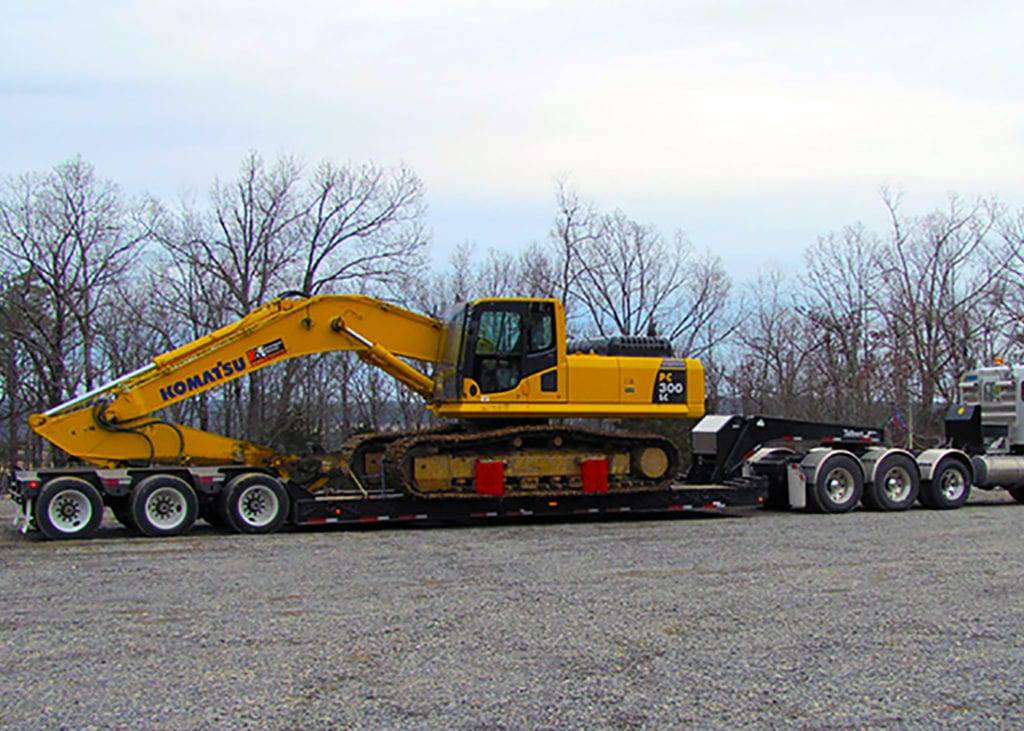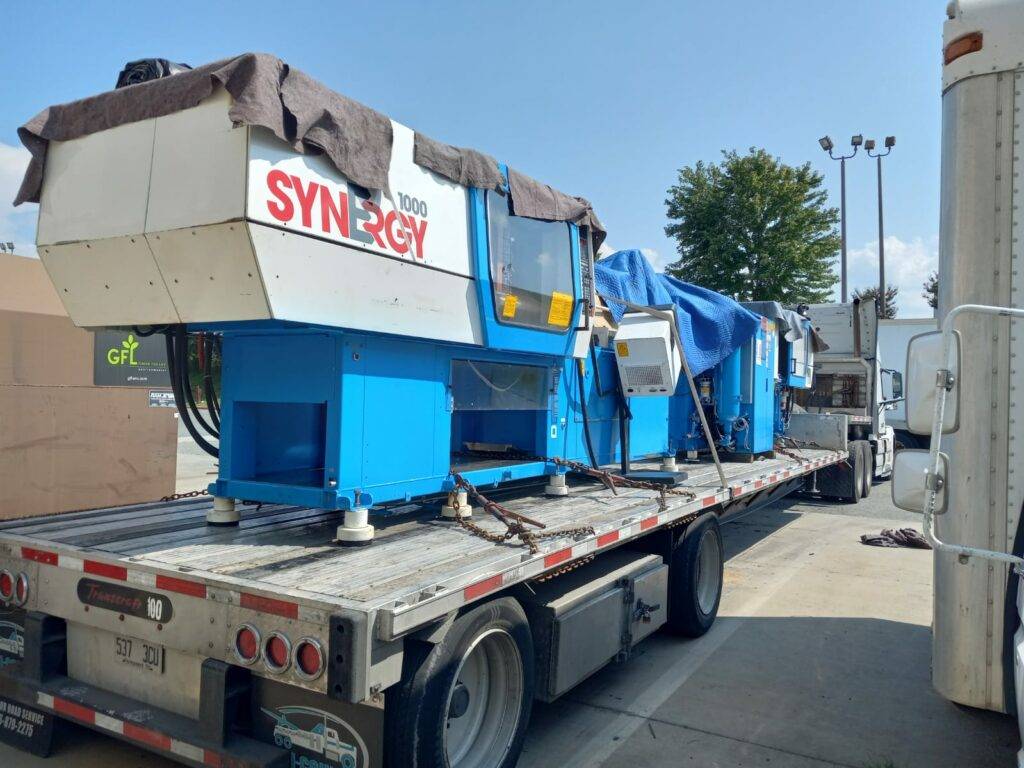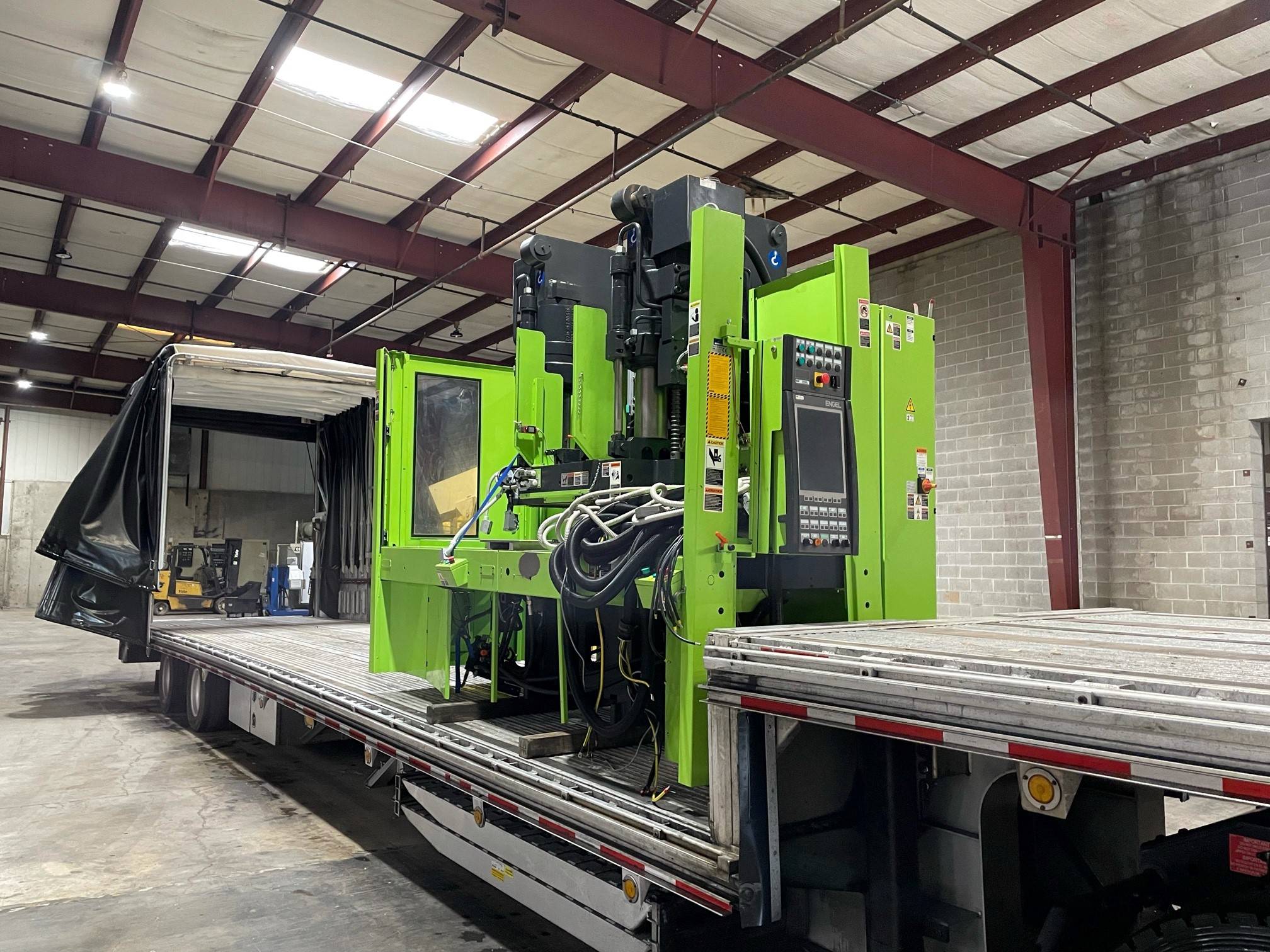Introduction to Heavy Equipment Hauling
Transporting massive machinery isn’t just about loading it onto a trailer and hitting the road. Heavy equipment hauling is a complex industry that plays a vital role in keeping our economy moving. From construction sites to manufacturing plants, the need to move large machines safely and efficiently is constant. Mastering the art of heavy equipment hauling ensures that projects are completed on time and that businesses operate smoothly without unexpected delays. Whether it’s a 20-ton excavator or a delicate piece of CNC machinery, every item requires careful planning and execution to reach its destination intact.

Types of Heavy Equipment
The world of heavy equipment is incredibly diverse. Each machine serves a unique purpose and comes with its own set of challenges when it comes to transportation. Some of the most common types of heavy equipment requiring specialized hauling include:
Construction Machinery
Bulldozers, excavators, cranes, and loaders are essential on construction sites. These machines often weigh tens of thousands of pounds and have dimensions that exceed standard transportation limits. For example, a large excavator can weigh over 80,000 pounds and stand more than 11 feet tall. Transporting such equipment requires specialized trailers and knowledge of regulations governing oversize loads.
Agricultural Equipment
Modern farming relies on advanced machinery like combine harvesters, planters, and tractors. Moving these machines between fields or farms, especially during peak seasons, demands timely and efficient hauling services. Some agricultural equipment has wide headers or attachments that increase their size and complexity for transportation.
Industrial Machinery
CNC machines, injection molding equipment, and presses are critical for manufacturing operations. These machines are often delicate despite their size and require careful handling to prevent damage. Proper crating, padding, and securement are essential when hauling industrial machinery.
Mining Equipment
Mining operations utilize some of the largest machines in the world. Hauling massive dump trucks, drilling rigs, and earth movers involves navigating weight restrictions and ensuring structural integrity during transport. These pieces of equipment can be so large that they need to be disassembled before transportation.
Military Equipment
Tanks, armored vehicles, and support equipment require secure and often confidential transportation. Specialized carriers handle these sensitive shipments with heightened security measures in place.
Understanding the specific needs of each type of equipment is crucial for safe and efficient hauling. Each category presents unique challenges, from securing the load to complying with various regulations.
Hauling Equipment and Trailers
Selecting the right hauling equipment is essential for the safe transport of heavy machinery. The choice of trailer can make a significant difference in handling, safety, and compliance with regulations. Here are some common types of trailers used in heavy equipment hauling:
Flatbed Trailers
Flatbeds are versatile and can handle a variety of loads. They offer an open platform, making loading and unloading straightforward. While ideal for equipment that doesn’t exceed standard size and weight limits, flatbeds require careful load securement since there’s no enclosure to contain the cargo.
Lowboy Trailers
Lowboy trailers have a low deck height, allowing taller equipment to be transported without exceeding height restrictions. With deck heights as low as 18 inches, they are perfect for carrying heavy construction machinery like bulldozers, excavators, and large industrial equipment. The low center of gravity also improves stability during transport.
Step Deck Trailers
Also known as drop decks, these trailers have a higher front deck and a lower rear deck. The lower section allows for taller loads without the need for permits for over-height. Step decks are suitable for equipment that is too tall for a standard flatbed but doesn’t require the extreme low deck of a lowboy.
Double Drop Trailers
Double drop trailers have a depressed center section, known as the “well,” which allows for the transport of extremely tall equipment. This design accommodates loads that cannot be transported on other trailer types due to height restrictions. The trade-off is that the well length is limited, which may not be suitable for longer equipment.
Extendable Trailers
For equipment that is excessively long, extendable trailers provide the necessary length without compromising stability. These trailers can be extended to accommodate long items like wind turbine blades or large structural components.
Specialized Trailers
Some equipment requires custom solutions. Multi-axle trailers distribute weight for extremely heavy loads, and perimeter frame trailers support oversized, heavy equipment by distributing the load across the frame.
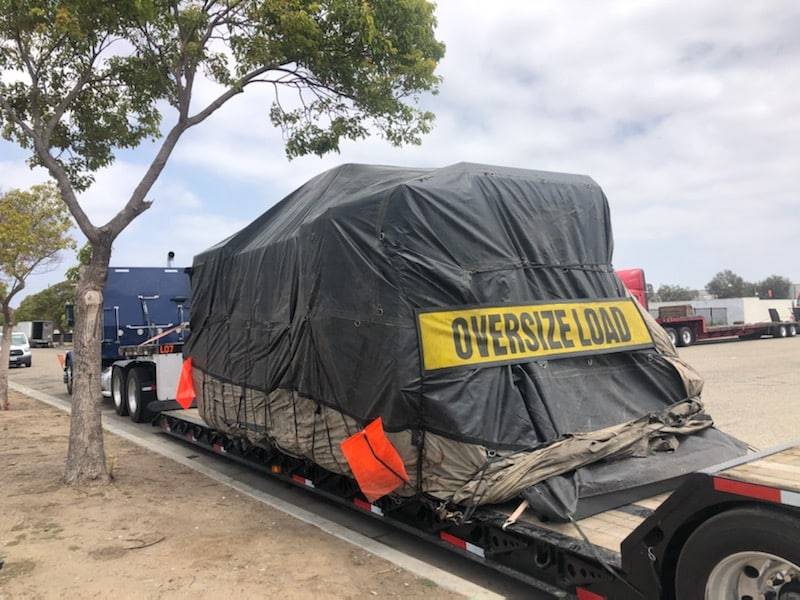
Choosing the right trailer involves considering the equipment’s dimensions, weight, and the route’s requirements. Working with a knowledgeable hauling company can help determine the best equipment for the job.
Safety Considerations
Safety is the cornerstone of heavy equipment hauling. Transporting large and heavy machinery comes with inherent risks, but these can be mitigated with proper precautions.
Load Securement
Properly securing the equipment is essential. The Federal Motor Carrier Safety Administration (FMCSA) sets regulations on load securement to prevent shifting or falling loads. Equipment must be fastened using appropriate chains, binders, and straps. The number of tie-downs required depends on the weight and dimensions of the load.
Weight Distribution
Improper weight distribution can lead to handling issues, increased stopping distances, and even vehicle rollovers. It’s crucial to balance the load across the trailer axles and ensure that no single axle is overloaded. Overloading can cause tire blowouts, brake failures, and structural damage to the trailer.
Driver Training
Operating a vehicle carrying oversized loads requires specialized skills. Drivers must be trained in handling the unique challenges, such as wider turning radiuses, increased stopping distances, and height clearances. They should also be familiar with the equipment being transported to understand any special requirements.
Route Planning
Not all roads are suitable for heavy equipment hauling. Low bridges, narrow roads, weight-restricted routes, and tight turns can pose significant challenges. Planning the route in advance ensures that obstacles are identified and alternative paths are established. Some routes may require permits or have time-of-day restrictions.
Weather Conditions
Adverse weather can exacerbate the risks associated with heavy hauling. Rain, snow, and high winds can affect vehicle handling and increase stopping distances. Monitoring weather forecasts and being prepared to adjust schedules is important for safety.
Equipment Maintenance
Regular maintenance of both the hauling vehicle and the trailer is essential. Brakes, tires, lights, and coupling devices must be in good working order. Unexpected mechanical failures can lead to accidents, delays, and increased costs.
Adhering to safety protocols protects not just the cargo but also the driver and other road users. It’s a responsibility that hauling companies and drivers must take seriously.
Permits and Regulations
Heavy equipment hauling is heavily regulated to ensure safety on public roads. Transporting oversized or overweight loads typically requires special permits, which vary depending on the route and jurisdictions involved.
Oversize Load Permits
When a load exceeds the standard legal dimensions set by state and federal regulations, an oversize load permit is required. The permits specify allowable dimensions and may impose restrictions, such as designated routes, escort vehicle requirements, and time-of-day limitations to avoid peak traffic hours.
Overweight Permits
If the gross vehicle weight exceeds legal limits, an overweight permit is necessary. These permits ensure that the load doesn’t damage roads and bridges due to excessive weight. They may include conditions like speed restrictions and avoiding certain structures.
Escort Vehicles
Some oversize loads require pilot cars or escort vehicles. Their role is to warn other road users of the oversized load and assist the driver with lane changes, turns, and navigating through traffic. Regulations on when escort vehicles are needed vary by state and the size of the load.
Compliance with DOT and FMCSA
Transporters must comply with regulations set by the Department of Transportation (DOT) and the FMCSA. This includes driver qualifications, hours of service limitations, vehicle inspections, and maintaining proper documentation. Non-compliance can result in fines, delays, and increased liability in the event of an accident.
International Regulations
Transporting equipment across international borders introduces additional complexities. Customs documentation, import/export regulations, and compliance with the laws of each country must be navigated carefully. Working with a hauling company experienced in international transport is essential.
Staying informed and compliant with all necessary permits and regulations is crucial to avoid fines and delays. It’s a complex area that requires expertise and attention to detail.
Choosing a Heavy Equipment Hauling Company
Selecting the right company to handle your heavy equipment hauling needs can make all the difference. Here are key factors to consider:
Experience and Expertise
An experienced company will have a proven track record of handling similar equipment and navigating complex logistics. They will understand the specific requirements for different types of machinery and have the knowledge to overcome challenges.
Equipment Availability
The company should have access to a fleet of specialized trailers and vehicles capable of transporting your equipment safely. This includes having the right trailers, such as lowboys or extendable trailers, and ensuring the equipment is well-maintained.
Technology and Tracking
In today’s digital age, real-time tracking and updates are invaluable. A company that leverages advanced technology can provide transparency and peace of mind, allowing you to monitor your shipment’s progress.
Customer Service
Personalized support ensures your questions are answered, and any issues are addressed promptly. A dedicated point of contact can make the process smoother and provide updates as needed.
Safety Record
A strong safety record reflects a company’s commitment to protecting your equipment and ensuring the well-being of their drivers and the public. Check for safety certifications and ask about their protocols.
References and Reviews
Looking at testimonials and reviews from past clients can provide insights into the company’s reliability and performance. Positive feedback from similar businesses or within your industry is a good sign.
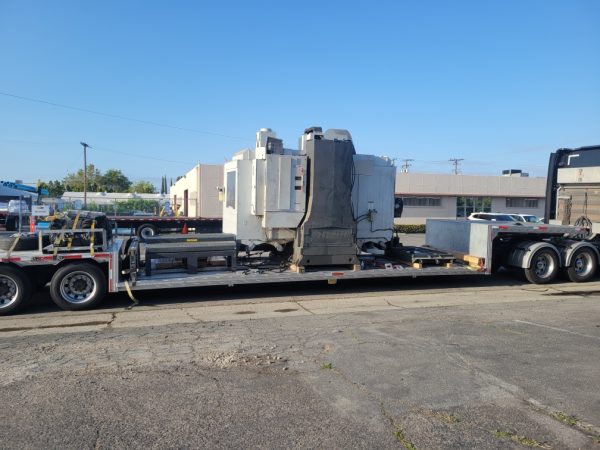
Making an informed choice ensures your equipment is transported securely and efficiently. It’s worth investing time in selecting a partner you can trust.
When it comes to heavy equipment hauling, partnering with a trusted professional is essential. You need a company that understands the complexities of transporting oversized machinery and can provide customized solutions tailored to your needs.
Ready to move your heavy equipment with confidence? Abound Transport Group offers tech-powered, real-time shipping solutions across the U.S., Canada, and Mexico. Specializing in CNC machinery, large vehicles, and oversized equipment, they ensure your shipments are handled with care and efficiency. With advanced technology and personalized customer service, Abound Transport Group makes heavy equipment hauling straightforward and stress-free. Contact them today to get started on your next haul.
